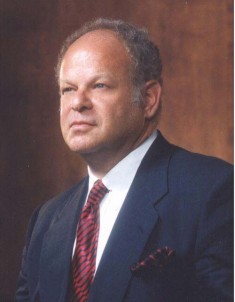| Martin Seligman | |
|---|---|
 |
|
| Psychologist | |
| Born | Aug. 12, 1942 Albany, New York |
| Nationality | American |
Martin Seligman is a famous American psychologist, author, and educator. His own theory of learned helplessness is very popular among scientific and clinical psychologists. Martin has been named as the most eminent psychologists of 20th century. He was also the 13th most frequently cited psychologists in introductory psychology textbooks throughout the century. He was also the 31st most eminent overall.
Early Life
Martin was born on August 12, 1942, in Albany, New York. He attended a public school and later The Albany Academy. In 964, he earned his bachelor’s degree at Princeton University. During his senior year, Martin had to choose between three offers from different universities.
These offers included animal experimental psychology at the University of Pennsylvania, philosophy at Oxford University, and an offer to join Penn’s bridge team. Martin chose to attend to the University of Pennsylvania to study psychology. In 1967, he earned his Ph.D. in Psychology.
Professional Career
After working as an assistant professor at Cornell University, Martin went back to the University of Pennsylvania to teach psychology. While at the university, he started his own research on an idea called learned helpless. He discovered that when people feel they have limited control over their situation, they tend to give up instead of fighting for control.
Martin saw a similarity with seriously depressed patients and urged that clinical depression and mental illnesses are a result of the lack of control over the outcome of a certain situation. Later on, together with Abramson, they reformulated this theory of learned helplessness to include attributional style.
Martin’s research eventually led him to develop an interest in optimism. Together with Christopher Peterson, they created a positive counterpart to the Diagnostic & Statistical Manual of Mental Disorders. In the research, the two looked across different cultures and millennia to try to distill a manageable list of virtues that have been highly valued from ancient India and China all the way to Greece and Rome.
 This is contemporary to western cultures. Their list included six character strengths: courage, wisdom, justice, humanity, transcendence and temperance. Each of these has several sub-entries. For example, temperance includes humility, forgiveness, prudence and self-regulation.
This is contemporary to western cultures. Their list included six character strengths: courage, wisdom, justice, humanity, transcendence and temperance. Each of these has several sub-entries. For example, temperance includes humility, forgiveness, prudence and self-regulation.
In July of 2011, Martin Seligman encouraged David Cameron to seriously look into the well-being and financial wealth in different ways of assessing the prosperity of a nation. During the same year, he also appeared on a program called Newsnight and was interviewed about his ideas and his interests in the concept of well-being.
In the year 1996, Martin was elected president of the APA (American Psychological Association). He was elected by the largest vote in this organization’s history. Each of the APA presidents is asked to choose a central theme for his/her term and Martin Seligman chose positive psychology. Instead of focusing on what was ailing us, he wanted mental health to focus on more than just the absence of an illness. Instead, Martin decided to concentrate on what makes people happy and fulfilled. Today, Martin is the director of Positive Psychology Center at University of Pennsylvania.
Contributions to Psychology
Martin is a professor of Psychology in University of Pennsylvania. Previously, he was the director of the University’s Positive Psychology center. In 1998, he was elected president of American Psychological Association. He is one of the board advisors of Parents magazine. As an author, Martin Seligman has written books about positive psychology topics such as Authentic Happiness, The Optimistic Child, Learned Optimism, Flourish and Child’s Play.
Martin Seligman was influenced by humanist thinkers such as Carl Rogers and Abraham Maslow. With time, positive psychology has grown and over the past two decades, Martin has often referred to as the “father of positive psychology.” In 1975, he published Helplessness: On Depression, Development, and Death. Later, he published Learned Optimism in 1991, What You Can Change and What You Can’t in 1993, and Authentic Happiness in 2002.
Personal Life
Martin Seligman once said in an interview that his favorite color was magenta; this was because of the amazing calming effects on this color on the human body. Martin plays bridge and actually finished second in one of the three major North American pair championships. He has won over 50 regional championships. Martin has seven children and four grandchildren.